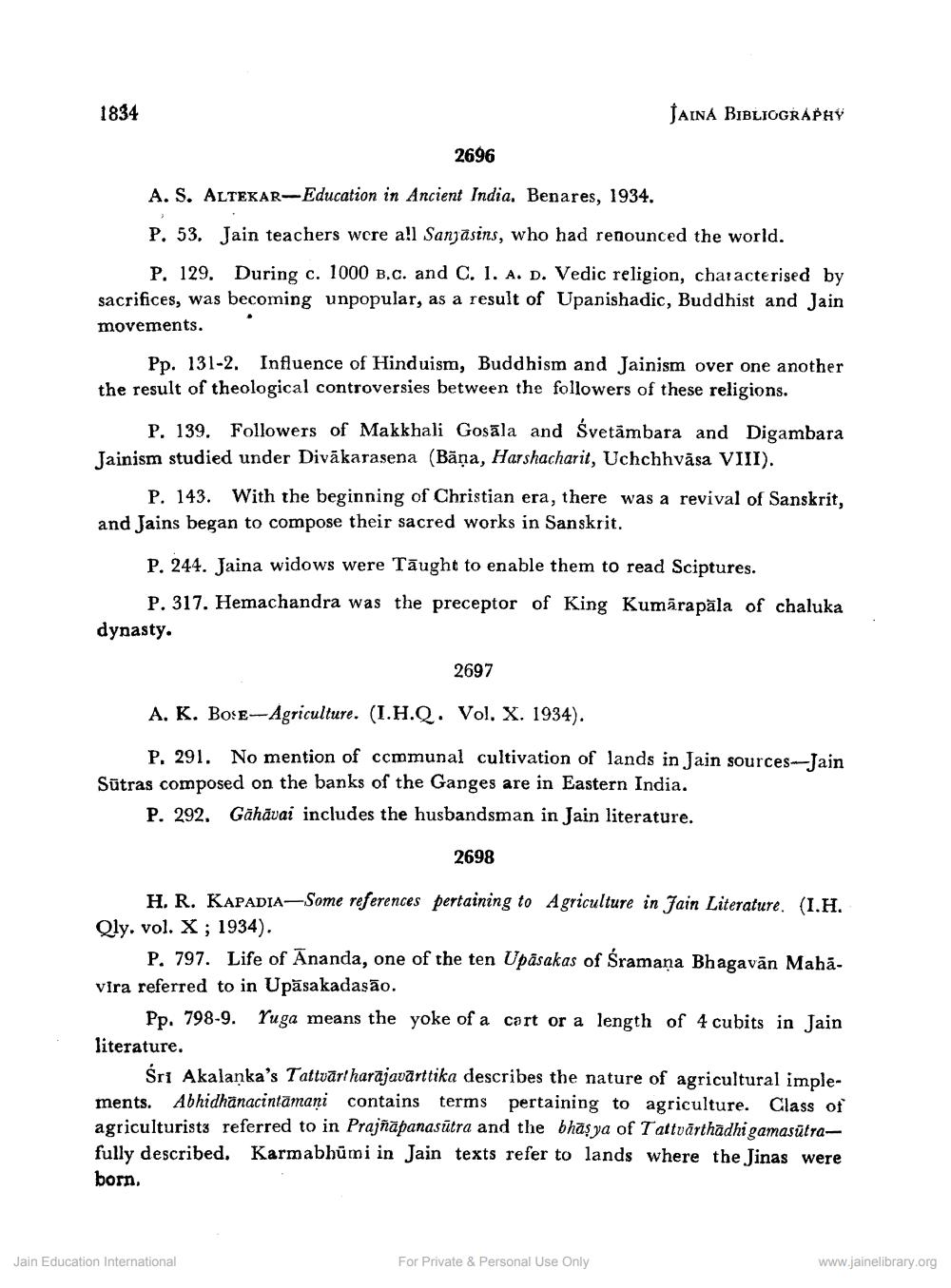________________
1834
JAINA BIBLIOGRAPHY
2696
A. S. ALTEKAR-Education in Ancient India. Benares, 1934. P. 53. Jain teachers were all Sanjasins, who had renounced the world.
P. 129. During c. 1000 B.C. and C. I. A. D. Vedic religion, characterised by sacrifices, was becoming unpopular, as a result of Upanishadic, Buddhist and Jain movements.
Pp. 131-2. Influence of Hinduism, Buddhism and Jainism over one another the result of theological controversies between the followers of these religions.
P. 139. Followers of Makkhali Gosāla and svetāmbara and Digambara Jainism studied under Divākarasena (Bāņa, Harshacharit, Uchchhvāsa VIII).
P. 143. With the beginning of Christian era, there was a revival of Sanskrit, and Jains began to compose their sacred works in Sanskrit.
P. 244. Jaina widows were Tāught to enable them to read Sciptures.
P. 317. Hemachandra was the preceptor of King Kumārapäla of chaluka dynasty.
2697
A. K. Bose-Agriculture. (I.H.Q. Vol. X. 1934).
P. 291. No mention of communal cultivation of lands in Jain sources-Jain Sūtras composed on the banks of the Ganges are in Eastern India.
P. 292. Gāhāvai includes the husbandsman in Jain literature.
2698
H. R. KAPADIA—Some references pertaining to Agriculture in Jain Literature. (I.H. Qly, vol. X ; 1934).
P. 797. Life of Ananda, one of the ten Upasakas of śramaņa Bhagavān Mahávira referred to in Upāsakadasāo.
Pp. 798-9. Tuga means the yoke of a cort or a length of 4 cubits in Jain literature.
Śri Akalanka's Tattvāri harajavarttika describes the nature of agricultural implements. Abhidhānacintāmaņi contains terms pertaining to agriculture. Class of agriculturist3 referred to in Prajñāpanasūtra and the bhāsya of Tattvārthadhi gamasūtrafully described. Karmabhumi in Jain texts refer to lands where the Jinas were born,
Jain Education International
For Private & Personal Use Only
www.jainelibrary.org




